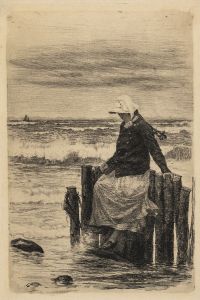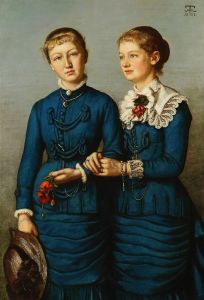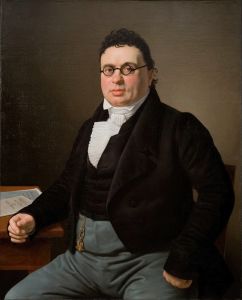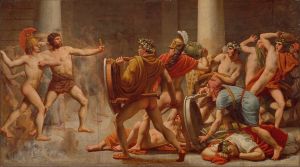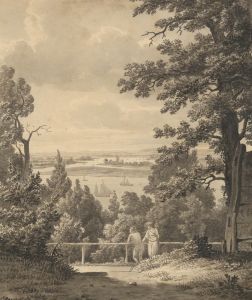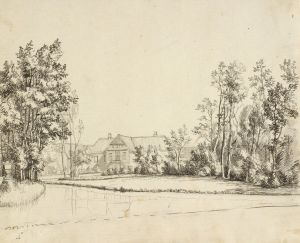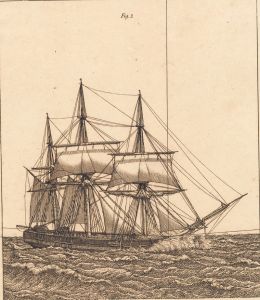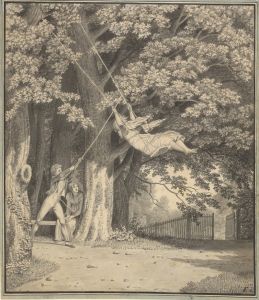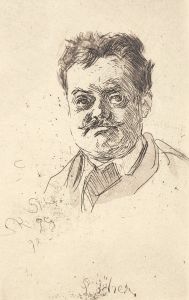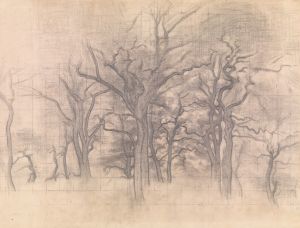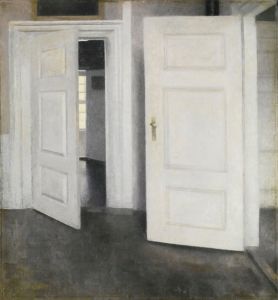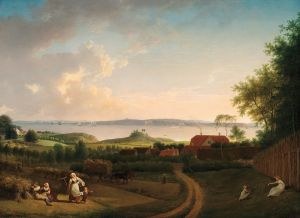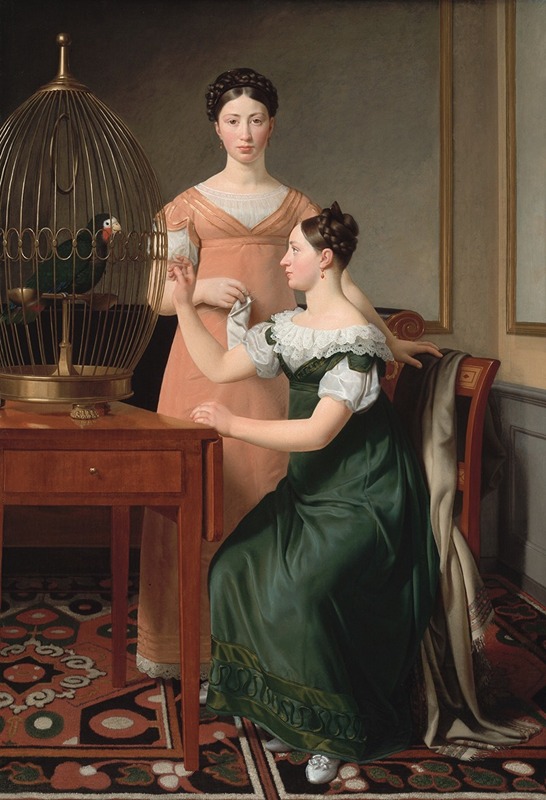
Mendel Levin Nathanson’s Elder Daughters, Bella and Hanna
A hand-painted replica of Christoffer Wilhelm Eckersberg’s masterpiece Mendel Levin Nathanson’s Elder Daughters, Bella and Hanna, meticulously crafted by professional artists to capture the true essence of the original. Each piece is created with museum-quality canvas and rare mineral pigments, carefully painted by experienced artists with delicate brushstrokes and rich, layered colors to perfectly recreate the texture of the original artwork. Unlike machine-printed reproductions, this hand-painted version brings the painting to life, infused with the artist’s emotions and skill in every stroke. Whether for personal collection or home decoration, it instantly elevates the artistic atmosphere of any space.
Christoffer Wilhelm Eckersberg, often referred to as the "father of Danish painting," was a prominent figure in the Danish Golden Age of art. Among his many works, "Mendel Levin Nathanson’s Elder Daughters, Bella and Hanna" stands out as a notable example of his portraiture, capturing the essence of early 19th-century Danish society.
Painted in 1820, this portrait features the two elder daughters of Mendel Levin Nathanson, a well-known Danish Jewish businessman and editor. Nathanson was a significant cultural figure in Copenhagen, and his family was part of the city's intellectual and artistic circles. The painting reflects not only the personal significance to the Nathanson family but also offers insight into the broader cultural and social milieu of the time.
Eckersberg's style is characterized by its clarity, attention to detail, and the harmonious composition that became hallmarks of his work. In "Mendel Levin Nathanson’s Elder Daughters, Bella and Hanna," these elements are evident in the meticulous rendering of the sisters' features and attire. The painting is a testament to Eckersberg's skill in capturing the likeness and personality of his subjects, a skill that earned him considerable acclaim during his lifetime.
The portrait depicts Bella and Hanna Nathanson seated together, exuding a sense of calm and poise. Their clothing and hairstyles are indicative of the fashion of the early 19th century, providing a glimpse into the period's aesthetic preferences. Eckersberg's use of light and shadow adds depth to the painting, highlighting the textures of the fabric and the softness of the sisters' skin. This attention to detail not only enhances the realism of the portrait but also underscores Eckersberg's dedication to his craft.
Eckersberg's work was instrumental in shaping the Danish art scene, and his influence extended to many students, including notable artists such as Wilhelm Bendz and Christen Købke. His portraits, including that of the Nathanson sisters, are celebrated for their ability to convey the character and status of the subjects while maintaining a sense of intimacy and immediacy.
The painting is housed in the Hirschsprung Collection in Copenhagen, which is renowned for its extensive collection of Danish Golden Age art. This collection provides valuable insights into the cultural and artistic developments of Denmark during the 19th century, with Eckersberg's works being a central highlight.
"Mendel Levin Nathanson’s Elder Daughters, Bella and Hanna" is more than just a family portrait; it is a reflection of the era's social dynamics and the role of art in documenting and shaping cultural identity. Through this painting, Eckersberg not only immortalized the Nathanson sisters but also contributed to the rich tapestry of Danish art history.





